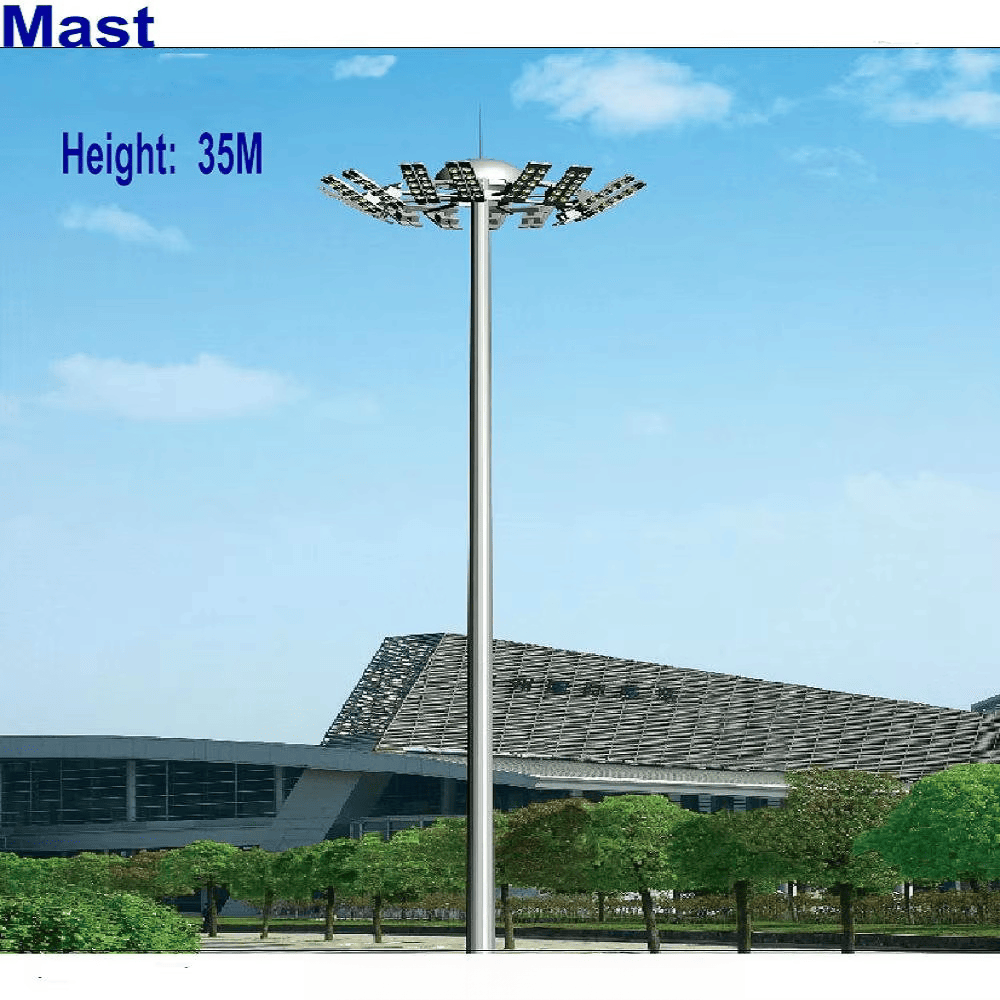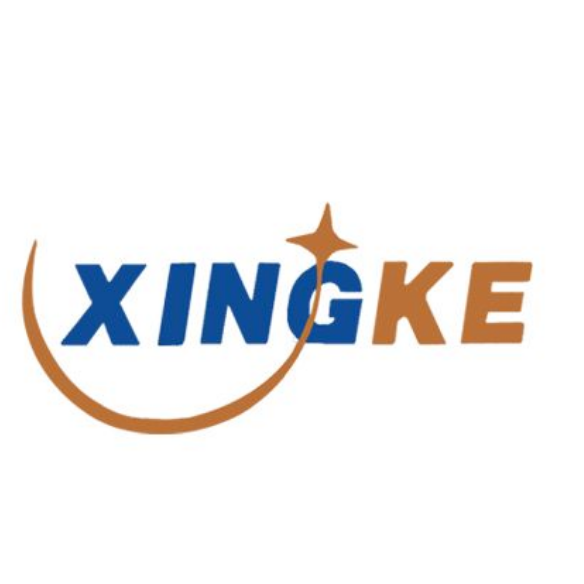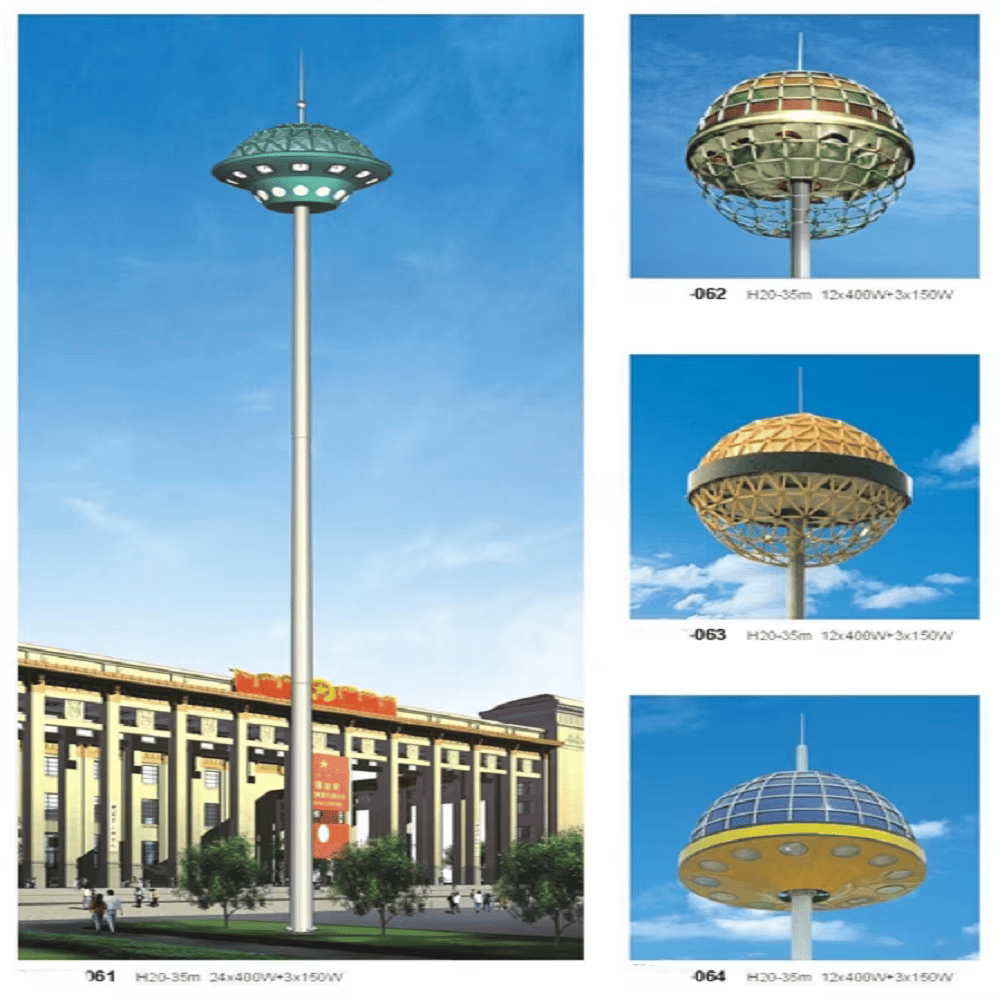גורמים עיקריים שחשוב לקחת בחשבון בבחירת פנסים על מasts גבוהים
דרישות גובה עבור כיסוי אופטימלי
כאשר בוחרים פנסים על מasts גבוהים, יש לשקול את הגובה, כדי להאריך את זמן ההארה. גובה נכון מבטיח השראה נכונה בכל קצוות החלל. ברוב המקרים, המasts צריכים להיות בגובה של 15 עד 25 רגל לפחות, בהתאם לשימוש. היכרות עם תקנים תעשייתיים, למשל מאגודה להנדסת תאורה (IES), יכולה לעזור לקבוע גבהים מתאימים להתקנת אורות חוץ.
אסטרטגיות מיקום עבור תאורה אחידה
אם יש צורך בזווית רחבה של תאורה לאזורים גדולים, יש להתקין עמוד תאורה גבוה בנקודות מתאימות. ניתן ליצור דפוס רשת של מנורות שיעיל עבור חניונים, מוקדי ספורט וכו'. חשוב למצוא מכשולים, כגון עצים ובניינים, שמונעים מהאור השמשי להתפזר בדרך הרצויה ומייצרים צללים לא רצויים. באמצעות תוכנת ניתוח פוטומטריה לפני ההתקנה, ניתן לחזות את הפיזור של האור ואת המיקום האופטימלי לצורך אפקט תאורה מיטבי וחיסכון באנרגיה.
בחירת חומרים מסורבלים למזג אוויר
בחירת חומרים עמידים למזג אוויר עבור תיילי תאורה גבוהים היא מאוד חשובה כדי שיסבלו ויפעלו בתנאי מזג האוויר. נוחלים חומרים עמידים בפני קורוזיה כמו פלדה עם ציפוי אבקה ואלומיניום, שכן הם יכולים לעמוד בתנאי מזג אוויר שונים. ציפויים מגנים מפני קרינת UV גם כן מועילים לשימור המראה והחיים של התאורה במיקומים שיזיפיים. מחקרים הראו ששקיעת יותר כסף על חומרים עמידים בפני מזג האוויר ונמוכי טיפוח כעת יכולה להקל על בעיות תחזוקה בעתיד.
השתפרת הפצת האור והיעילות
דפוסי אור: Flood לעומת תאורה ממוקדת
נורה למדים גבוה , כיצד בוחרים את זווית קרן האור. אין ספק שחלוקת אור סבירה היא סיבה חשובה להשגת תאורה אידיאלית. פנסים חזקים מתאימים במיוחד לאזורים רחבים ופתוחים כיוון שהם מספקים כיסוי רחב במיוחד של 120 מעלות, מה שעשוי להיות שימושי במיוחד למיקום כמו מגרש ספורט או חניון. לעומת זאת, תאורה מרוכזת מספקת תאורה ישירה וממוקדת, אידיאלית למדרכים צרים או לאזורים ממוקדים קטנים. על מנת לקבל החלטה נכונה, ישנן המלצות לעיצוב תאורה המקשרות דפוסי קרניים עם צרכים של תצוגה ובטיחות, לשם תאורה יעילה וראיה אופטימלית.
יתרונות של אורות גובה עם LED
פנסים LED על מasts משמעותם פחות אנרגיה, פחות תחזוקה ויותר חיסכון! מאחר שהם צורכים 80% פחות חשמל בהשוואה לפתרונות מסורתיים, הם מהווים פתרון זול לשימוש בקנה מידה גדול. בנוסף, למכשירים אורך חיים ארוך, עד 25,000 שעות, מה שמקטין עוד יותר את עלות ההחלפה, את העומס על כוח האדם ומחירים כלליים של שימוש. מחקר מיוחד גם הראה ש-LED משפר את איכות האור בנוסף לחיסכון באנרגיה, וכן משפר את הנראות, הבטיחות והריגוש בעבודה באזורים תעשייתיים. יישום תאורה מסוג LED יכול להשפיע רבות על הוצאות תפעוליות ועל יעדי סביבה.
טמפרטורת צבע לצרכים פונקציונליים ואסתטיים
בחירת טמפרטורת הצבע הנכונה באורות עמוד גבוה מסיבות רבות. עליכם לבחור את טמפרטורת הצבע הנכונה באורות עמוד גבוה גם מסיבות מעשיות וגם אסתטיות. טמפרטורות של תאורה ישתנו בהתאם למיקום: צהובים יותר (3000K) מתאימים לסביבות שיתרמו מאווירה חמה ומזמינה, כגון פארקים ושטחים חיצוניים של מגורים; תאורה קרירה יותר (5000K) מספקת טווח ביניים – פתרון אידיאלי לאתרים ספורטיביים (במיוחד מגרשי טניס) וכבישים שבהם ראייה ברורה היא הכרח. חשוב לקחת בחשבון את השימוש המיועד של החלל; למשל, אינדקס הצגת צבעים גבוה (CRI) יכול להיות יתרון לצורך השתקפות צבעים מדויקת של מרחב בתאורה. ניתוח זה לא רק משפיע על הרגשה כללית – אלא גם עניין של בטיחות ופונקציונליות.
היבטי קושי החומר ושימור
אלומיניום לעומת פלדה: השוואה בין התנגדות לרקוב
כשמדובר בעמודי תאורה, אחד הגורמים החשובים ביותר להתחשב בהם הוא עמידות בפני שפיכה וכיצד אלומיניום משתווה פלדה. האלומיניום עמיד יותר בפני שפיכה מאשר פלדה, במיוחד בפני שפיכת מים מלוחים, לחות גבוהה וחשיפה למלח, ולכן הוא אידיאלי למיקומים מסוימים כגון מוסדות ימיים הנמצאים בסביבה נקייה מאוד. לעומת זאת, הפלדה היא חומר זול וחזק ביותר, אך יש לכסות אותה בזינק כדי להגן עליה מהשפיכה בסביבות אלו. עם השכבה המגנה הזו, הפלדה מסוגלת לעמוד בשפיכה, מה שמאפשר לה לשרוד זמן ממושך יותר, גם בסביבות קשות. מחקר של הענף מצביע על כך שתסיסה של חומרים אחראית עד 70% מההוצאות על תחזוקה בתשתיות תאורה, מה שממחיש את חשיבות בחירת חומרים עמידים בפני שפיכה.
עמודי פיברגלאס עבור סביבות קשות
מוטות פיברגלאס יכולים להיות בחירה מצוינת לישומים קשיחים. הם קלי משקל, עמידים בפני חלודה ומועילים במיוחד באזורים חופיים שבהם מלח וرطوبة שכיחים. אני לא אלך סביב הסבון, אחד הדברים הטובים ביותר במודי פיברגלאס הוא שהם עמידים ויכולים לסבול מכה כבדה כשמדובר בסופות קיצוניות ורוחות חזקות. מחקרים מראים שמוטות פיברגלאס יש להם עלויות תחזוקה נמוכות בהשוואה למוטות מתכתיים ולכן זו בחירה מושכת באזורי עיר. עם יכולת ספיגת רטט ותכונות לא מוליכות, החומרים הללו אידיאליים לישומים מאתגרים, מקטינים את הוצאות התפעול ומחסכים בצורכי תחזוקה לאורך זמן.
הקטנת עלויות תחזוקה באמצעות תכנונים חזקים
עיצוב ובנייה המגנים על ההארה מהווים אסטרטגיה של השקעה שמטרתה להפחית את עלות התפעול והתחזוקה של מערכות ההארה. איכות עם חומרים עמידים מקטינה את עלות התיקון ותדירות ההחלפה. תכונות אלו, הכוללות בקרות מתקדמות של ההארה ובנייה עמידה כדי לעמוד בלחצים מכניים, משפרות את העמידות הכוללת. לפי מקורות בתעשייה, תחזוקה מונעת מסוג זה יחד עם עקרונות עיצוב טובים יוצרים חיסכון אמיתי של עד 30% בעלויות תחזוקה לאורך מחזור החיים. זה מאפשר לשמור על תשתית ההארה פעילה, תוך שיפור בקרה על עלויות התפעול.
נורמות התאמה ואمان למאורות עמודים גבוהים
התקשרות לדרישות רגולטוריות מקומיות
כשאנחנו מתקינים אורות בגובה גבוה, עלינו להשיג תאימות לתקנות מקומיות. לכל רשות מקומית יש תקנות משלה לגבי תאורה חיצונית כדי לשפר את הבטיחות הציבורית ולצמצם זיהום אור. על ידי סקירת הנחיות איזוריות וסוכנויות מקומיות, אנו יכולים להבין טוב יותר אילו מגבלות קיימות על גובה ועל מספר הלומן של הרכיבים. אכן, מומחים מדגישים כי על ידי התנהגות פרואקטיבית בנוגע לתאימות, חברות לא רק שיפתחו עונשים עתידיים, אלא גם יתוכננו פרויקט טוב יותר ויקבלו קבלה גדולה יותר מהקהילה.
דירוגים IP לביצועים חסרי מים
דירוג IP של מנורות עמוד גבוה דירוג IP של מנורת עמוד גבוה חשוב במיוחד בהערכת ביצועיה נגד מזג אוויר. דירוג IP, כמו IP65, אומר שמגורים יכולים לעמוד אבק ומים, מפתח לשימוש בחוץ. אפקט חסין מים מעולה, מגן על אור LEDs מפני כניסה של מים ואבק..HttpServletRequest 请求 את ערך הערך; סוג:stringfunctionWhat类型网站,例如 highwaycode.ukFunction可选请求的值,例如 3-1返回 "xml"默认值: (n מחקר מראה שמסגורים עם דירוג IP מתאים יכולים להפחית את שיעורי הכישלון ולספק אמינות של ציוד בכל סוגי הסביבה.
תעודות אישור עבור התקנות במרחב ציבורי
אישור הוא גם דרישה כדי להבטיח את הבטיחות והאיכות של התקנות במרחבים ציבוריים. לדוגמה, לצורך ציוד תאורה, חובה שיגיע לאישור לפי תקנים ידועים כגון UL או CE, כדי להבטיח את אמינות ויעילות מערכות התאורה בסביבות שונות. אישורים אלו מבטיחים שהציוד עבר בדיקה על ידי גוף מאושר במטרה לעמוד בסטנדרטים שונים של בטיחות או ביצועים. יש ראיות שמראות שהתאמות להנחיות מסוג זה לא רק מגדילה את האמון הציבורי, אלא גם מגביהה את שיעור ההצלחה של פרויקטי תאורה.

התקנה וניהול עלויות ארוך טווח
בסיס שורש לעומת התקנה ישירה
בחירת בסיס עוגן לעומת קבורה ישירה היא אחת ההחלטות המרכזיות שעליהן צריך להחליט בעת התקנת פנסים על מasts גבוהים. התקנות המשתמשות בעוגנים עשויות לספק יתרונות בתקופות של תנאי קרקע או מזג אוויר קשים. הן מציעות גמישות רבה יותר בתיקונים ובהחלפות, במיוחד אם יש רוח חזקה או מזג אוויר גרוע. לחלופין, הקבורה הישירה יכולה להגביר את היציבות ולכן עשויות להיות לה תכלית בהקמה יציבה. מחקר גם הוכיח שבסיסי עוגן יכולים להפחית את עלות ההתקנה. הם גם מקילים על הגדרת זוויות האור ועל שינוי רמות האור כלפי מעלה או מטה, מה שמוסיף עוד רמת גמישות לפרויקטים.
חסכון באנרגיהtj עם סistמאות שליטה חכמות
השימוש בטכניקות בקרה חכמות בתאורת עמודים גבוהים יוביל לצמצום משמעותי בצריכת האנרגיה והעלויות. עם שימוש בכלים כמו גלאי ו hẹn, מערכות אלו חכמות מספיק כדי לדעת מתי יש צורך בהפעלת התאורה, ולכן הן ממשיכות לספק חיסכון באנרגיה של עד 30% ויותר, כפי שנראה במספר מחקרים מוצגים. רשויות מקומיות שאמצו את השימוש בטכנולוגיות אלו במערכות התאורה שלהן השיגו חיסכון כלכלי, בנוסף לתועלות הסביבתיות. בקרות חכמות מוכיחות כי כאשר תאורה וטכנולוגיה מתמזגות, התוצאה היא יעילות וקיימות.
ניתוח עלות מחזור חיים של פתרונות LED
בעת ביצוע ניתוח של עלות מחזור חיים של פתרונות LED בתאורת עמודים גבוהים, מנהלי פרויקטים יכולים לקבל הבנה ברורה וشاملת יותר של העלות הכוללת ועלות הבעלות של התאורה במהלך תקופת חייה. בעוד שעלות הפעלה ראשונית של טכנולוגיית LED גבוהה בהשוואה לפתרונות HID, למכשירים אלו בדרך כלל יש חיסכון עצום בעלויות אנרגיה וחילוף לאורך זמן. כתוצאה מכך, עלות מחזור החיים הכוללת נמוכה יותר מאשר תאורה מסורתית. הערכות של ענף מדגישות באופן עקבי את הערך המובנה של ניתוחים כאלו, כדי לאפשר קבלת החלטות מושכלת בפרויקטים עירוניים, ומבטיחים ש-LED יישארו בחירה כלכלית ואופטימלית לתכנון ערים.
שאלות נפוצות
מה הגובה האידיאלי עבור אורות עמודים גבוהים?
הגובה האידיאלי עבור אורות עמודים גבוהים בדרך כלל משתרע בין 15 ל-25 רגל, תלוי בשימוש הספציפי ובאזור שדורש תאורה.
איך אני יכול להשיג תאורה אחידה?
ניתן להשיג תאורה אחידה על ידי השמת אורות באופן אסטרטגי.setLayoutManager(layout) לתבנית רשת ולהשתמש באנליזה פוטומטרית כדי להדמות את התפלגות האור האופטימלית.
למה כדאי לבחור במאורות LED גבוהים?
מאורות LED גבוהים הם יעילים יותר אנרגטית, משתמשים עד 80% פחות חשמל, ובעלי תקופת חיים ארוכה יותר, מה שמצמצם את ההוצאות והעומס של תחזוקה.
איזה חומרים הם הטובים ביותר למאורות גבוהים באזורים חוף?
אלומיניום ופיברגלס הם בחירות מצוינות לאזורים חוף בשל התנגדותם המתקדמת לקורוזיה והทนאיות שלהם בתנאים מזג אוויר קיצוניים.
מה הם דירוגי IP ולמה הם חשובים?
דירוגי הגנה (IP) מסמנים את היכולת של מוצר לעמוד בפני אבק ורطوות. דירוגי IP גבוהים יותר מתאימים להגנה טובה יותר ותקופת חיים ארוכה יותר של המאור.

